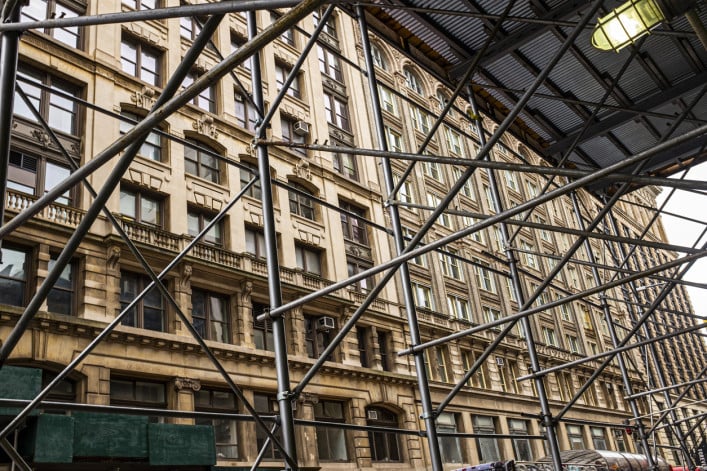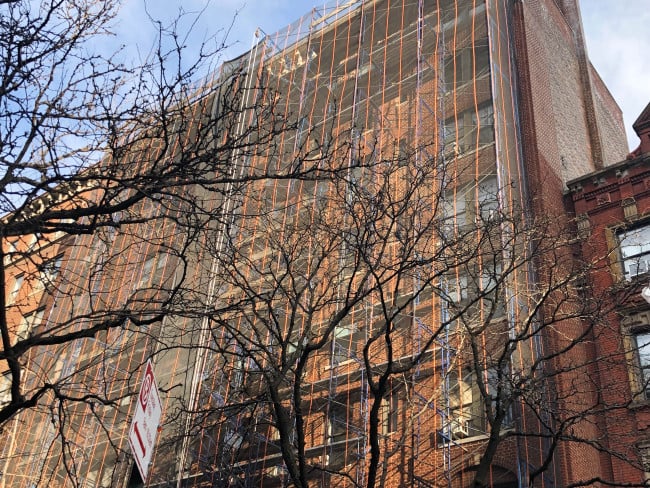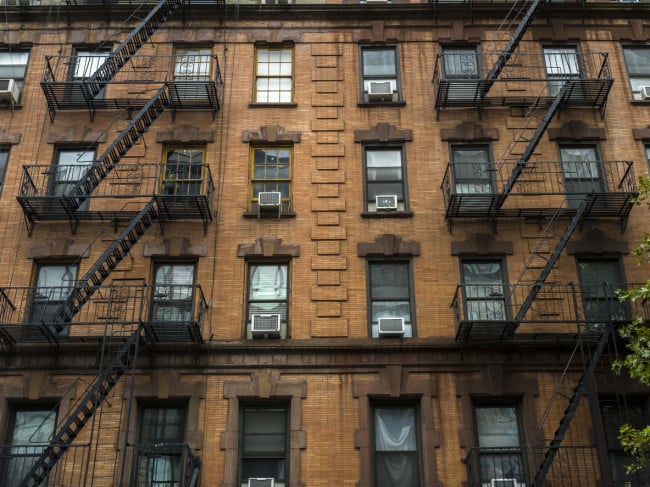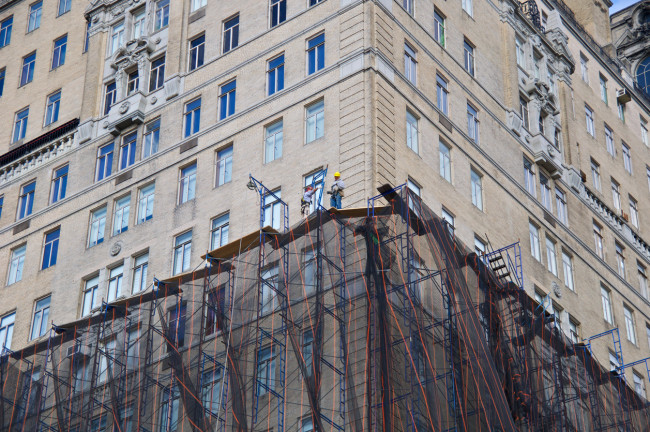How can I make a neighboring building owner take down scaffolding that's been up for years?
- You can make a complaint about unsafe scaffolding or sheds to 311 by phone or online
- NYC says its shed removal initiative has taken down more than 500 sidewalk sheds

When a shed or scaffolding has been up for a very long time and attracts crime or other problems, there are steps you can take.
iStock
A neighboring building has had scaffolding up for at least three years for facade restoration work, but aside from maybe a day or two, there has been no work on the building. The area under the scaffolding has become a hub for drug dealers and crime. What legal steps can be taken to force the building owner to either complete the work or remove the scaffolding?
Scaffolding and sidewalk sheds are put in place to protect construction workers and pedestrians in New York City, but if they remain up long after any work is done, you can file a complaint with the city or consider legal action, our experts say.
Sidewalk sheds—structures with roofs that sit directly on top of the sidewalk—help “protect New Yorkers from falling construction debris and buildings that have been allowed to fall into disrepair,” says Ryan J. Degan, deputy press secretary at the Department of Buildings. Scaffolding, the work platform that runs up the face of a building or hangs from its roof, helps protect construction workers on the job.
"Sidewalk sheds can become a nuisance for the community if they are allowed to remain in place year after year, when repair work at the building has stagnated,” Degan says. “The department has taken significant steps to crack down on long-standing sidewalk sheds that take up valuable space on our city’s sidewalks.”
[Editor’s Note: A previous version of this article was published in March 2022. We are representing it with new information for January 2024.]
A new approach to limiting scaffolding
NYC launched a program in July 2023 to “Get Sheds Down” (as it was dubbed) and saw 500 sheds come down in the following six months. The DOB, which issues permits for sidewalk sheds, also released guidance on how building owners can use netting instead of sheds to protect pedestrians and is reviewing designs for a “less obtrusive” way to protect pedestrians.
Through “Get Sheds Down,” the DOB managed to remove 75 sidewalk sheds that had been up around NYC buildings for more than five years.
But the city’s maze of scaffolding hasn’t disappeared.
Why scaffolding and sheds persist
The average age of a NYC shed is 513 days as of Jan. 16th, up from 255 days in March 2022. And 542 sheds have been up for more than four years, according to the city’s sidewalk shed tracker.
Scaffolding and sidewalk sheds have become more common sights in recent years due to Local Law 11, which requires that buildings taller than six stories have their facades inspected and repaired every five years.
"Local Law 11 requires buildings to maintain their facades, and the scaffolding is put up to protect people from getting hit by bricks or debris," says Sam Himmelstein, a lawyer who represents residential and commercial tenants and tenant associations (and FYI, a Brick sponsor). "You can't go to court and ask them to take it down."
What you can do
But when scaffolding or a shed has been up for a suspiciously long time, attracting crime or other problems, there are steps you can take.
You can make a complaint about problems with scaffolding or sidewalk sheds through 311, which includes a list of what to include in a report online. You could go to court and institute a nuisance action, claiming that the scaffolding created unsafe conditions amounting to a nuisance, though that could be a difficult case to make.
It's worth discussing the issue with your neighbors as well to make a stronger case when complaining to the city or to your property owner.
"As a group, you could write letters to the landlord inquiring about what's happening and when you can expect the scaffolding to come down," Himmelstein says. "You can escalate from there by bringing an HP action to force the landlord to do the work, or getting in touch with the city. Being persistent is key."
A previous version of this article contained writing and reporting by Alanna Schubach.




























